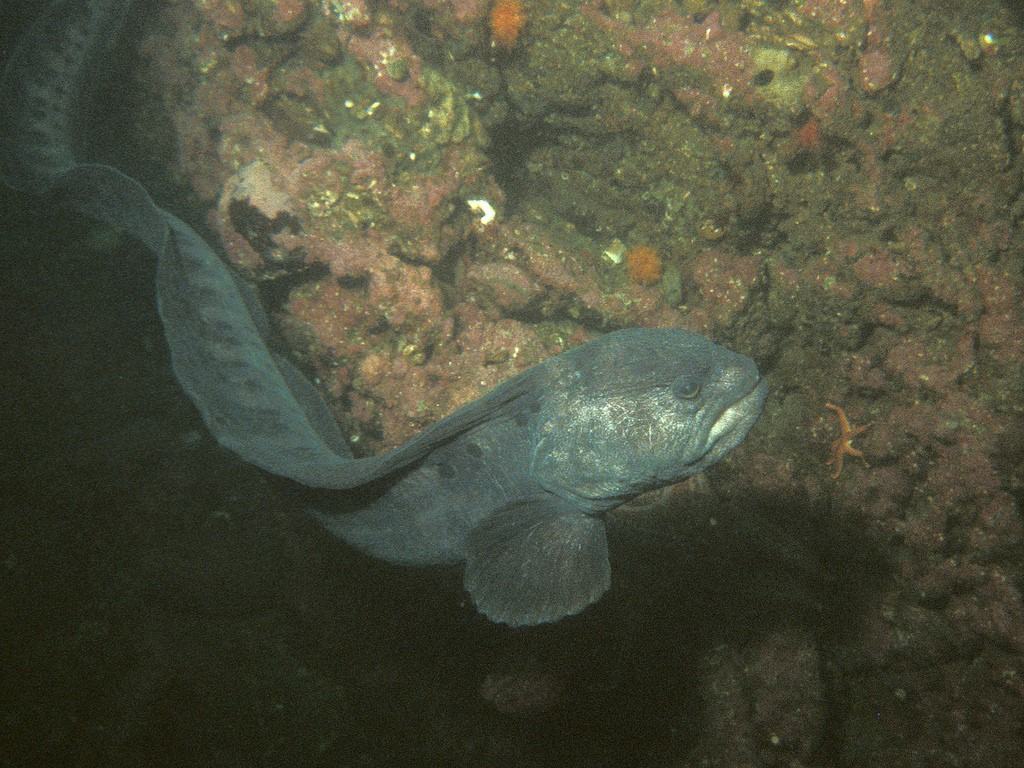
It essentially curves into an S-shape to push forward across the sea. Not unlike a snake on the ground, the wolf eel uses its body to propel itself forward. It may be a vicious-looking eel, but it totally has the opposite temperament.” Threats To The Wolf Eel’s Future “Their jaws are very strong and if you got your finger in there you’d regret it.

“They’ve got faces only a mother could love,” said Scott Reid of the Monterey Bay Aquarium. Are Wolf Eels Dangerous?įlickr/California Department of Fish and Wildlife A wolf eel in its cave. While many people across this third of the globe might find themselves terrified by the wolf eel, these gentle giants are not what they seem. And unlike its cousins, the wolf eel slithers through a vast swathe of the Pacific, from the waters of Northern California and the Bering Sea to the Sea of Japan. However, these monsters of the deep are much friendlier than you’d ever think - and they aren’t actually eels at all.Ĭontrary to popular belief, the wolf eel ( Anarrhichthys ocellatus) belongs to the wolffish family, though this particular specimen is notably longer than its relatives. One of the most terrifying of these is the wolf eel of the North Pacific - a remarkably ugly creature that can grow up to eight feet long and sports powerful jaws and sharp teeth. "If you, for example, took out the heart of this fish, it would probably continue to beat for an hour if kept in the correct solution." He ended by criticizing the footage, drawing attention to the lack of respect being paid to the animal as it is just being played with.įor more strange instances of fish appearing to resurrect after death, check out this wiggling fish that has already been gutted and these twitching fish that have been fried.Despite its monstrous jaws and teeth, the wolf eel is actually a gentle giant that’s even known to cuddle with divers.įew beasts strike more fear into the hearts of humans than those that make their homes in the unknown darkness. "The reason for why this reflex can persist after decapitation is because these are cold-water species, and the cold temperature allows tissues, like the brain, nerves, and muscle to 'stay alive' longer, before they die from lack of oxygen, and that the reflex arch from the mouth to the brain and back is unharmed by the decapitation," explained Björnsson. Wolffishes have particularly strong jaw muscles as they feed on creatures with solid shells like mussels, clams, and sea urchins. On detecting something entering the mouth, sensory nerves send signals to the brain, which then sends more nerve signals to the jaw muscles, telling them to contract.

Essentially, the jaw is programmed to bite. "This is obviously a neuromuscular reflex, with receptors in the jaws and/or mouth cavity which register if anything (a prey, normally) is in the mouth," said Björnsson. So how did the fish manage to bite the can after being decapitated? This they bite down very hard with very sharp teeth, and they don’t let go. the contents of a bottom trawl is dumped on the deck of a trawler and the fishermen stand knee-deep in various species of fish, working on sorting and separating, an often-used routine was to stick a broom handle or similar into the mouths of the stray wolffish in the catch, so that nobody would be hurt by accidentally sticking a hand or a foot in their gaping jaws.


"The wolffishes have a notorious biting reflex which is well-known by fishermen," said Björnsson. "Thus when e.g. It eats crustaceans as well as mollusks, smaller fishes, and worms. "I would most definitely think that this is a spotted wolffish ( Anarhichas minor)," Professor Björn Thrandur Björnsson, head of the fish endocrinology laboratory at the University of Gothenburg, told IFLScience. The spotted wolffish is found in the North Atlantic and Arctic Oceans and can grow to almost 2 meters (6.5 feet) in length.


 0 kommentar(er)
0 kommentar(er)
